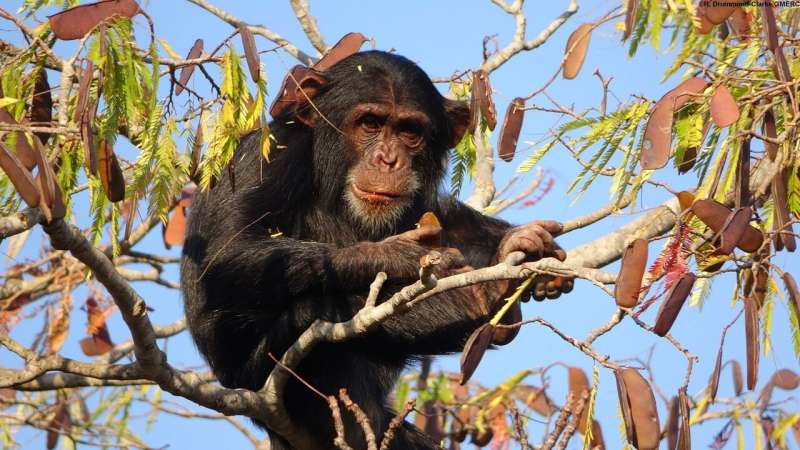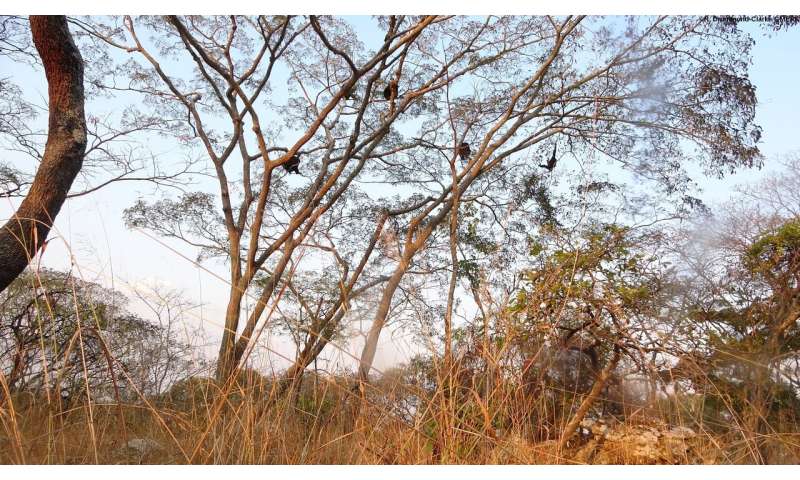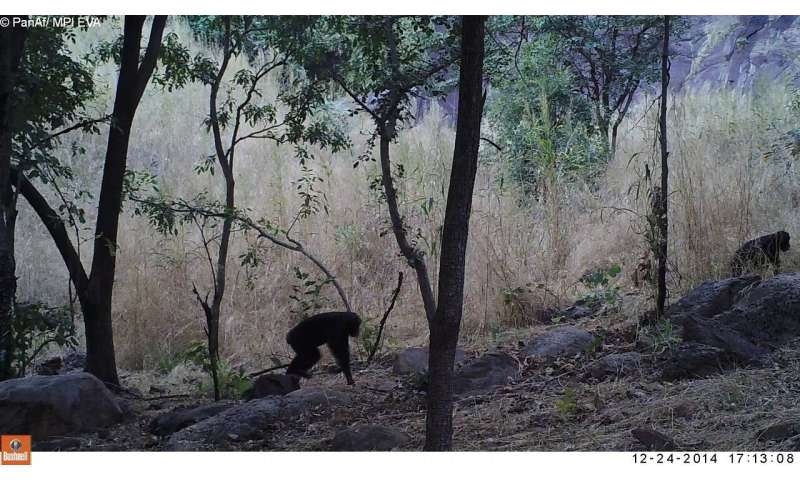Chimpanzees show greater behavioural and cultural diversity in more variable environments

Behavioral flexibility enables species to adapt to uncertainty and changing ecological conditions via mechanisms such as innovation and greater cognitive capacity. Indeed, large brained species of birds or nonhuman primates often live in habitats that are highly seasonal and can sustain periodic resource shortages. Similarly, our own species is thought to have evolved an unprecedented level of behavioral flexibility in order to adapt and survive in fluctuating and unpredictable environmental conditions.
One of our closest living relatives, chimpanzees, possess a number of diverse behaviors observed across a variety of contexts, that are found in some wild populations while being absent in others. These include tool use for communication, foraging on insects, algae, nuts, or honey, and thermoregulatory behaviors such as bathing in pools or using caves in extremely hot environments. Importantly, some of these behaviors also show evidence for being socially learned and are therefore considered to be cultural traditions particular to certain chimpanzee groups. This degree of behavioral variation provides a unique opportunity to investigate the effects of environmental conditions on both behavioral and cultural diversity within a single species.
Combining fieldwork with in-depth literature search
An international team of researchers led by Ammie Kalan and Hjalmar Kühl of the Pan African Program: the Cultured Chimpanzee (PanAf) at the Max Planck Institute for Evolutionary Anthropology compiled a data set combining fieldwork conducted by the PanAf at 46 field sites, plus an in-depth literature search on chimpanzee research. For 144 chimpanzee social groups they investigated the long-standing question of under which environmental conditions chimpanzees acquire more behavioral traits. They used their unique dataset to test whether chimpanzee groups were more likely to possess a larger set of behaviors if they lived in more seasonal habitats or habitats where forest cover repeatedly changed over the last thousands of years. The behaviors largely included tool use and more than half have been described as cultural in previous studies.
The authors found that both recent and historical sources of environmental variability were positively associated with chimpanzee behavioral and cultural diversity. "Chimpanzees experiencing greater seasonality, living in savannah woodland habitats and located further away from historical Pleistocene forest refugia were more likely to have a larger set of behaviors present," says Kalan.
These results suggest that a species closely related to humans also uses behavioral flexibility to adapt to more seasonal and unpredictable environments. "Since the behaviors we examined are largely considered cultural, we could further infer that environmental variability also supports cultural diversification in chimpanzees," says Kalan.
-

Savannah chimpanzees of the Issa valley in Tanzania feeding in a tree. Credit: R. Drummond-Clarke/GMERC -

Chimpanzees cross the savannah in Bafing, Mali, and were "caught" by a camera trap. Credit: PanAf/MPI-EVA
Environmental variation as driver for diversification
With respect to human evolution, behavior is often difficult to study via the fossil record alone, therefore studies of nonhuman primates such as this one can provide us a comparative insight into the potential selection pressures that may have been significant in our own past. "Many studies suggest that environmental variation acts as an important driver for behavioral or cultural diversification in both humans and animals, but this is some of the first cross-population data within a single species to support this idea," says Kalan.
The study has also demonstrated the great potential of a cross-population research approach and it is very likely that it will continue to provide fascinating insights into the emergence of chimpanzee population diversity. "While we have learned a lot about the relationship between environmental variability and chimpanzee behavioral diversity in this study, there may be other demographic and social factors that have also played an important role in the process of behavioral diversification," says Kühl, a researcher at the Max Planck Institute for Evolutionary Anthropology and the German Center for Integrative Biodiversity Research (iDiv). "With continued efforts to study and compare chimpanzee populations at large numbers, I am convinced that many more exciting discoveries will be made in the future that will provide further insights into the mechanisms of behavioral diversification in chimpanzees, but that will help us to also better understand our own evolutionary history."
The PanAf continues to collect species and behavioral annotations from their video camera traps via Chimp&See. At this platform anyone can watch the PanAf videos from across the chimpanzee range, and by classifying the species and behaviors they observe, contribute to the growing PanAf data set.
The study is published in Nature Communications.
More information: Nature Communications, DOI: 10.1038/s41467-020-18176-3
Journal information: Nature Communications
Provided by Max Planck Society




















